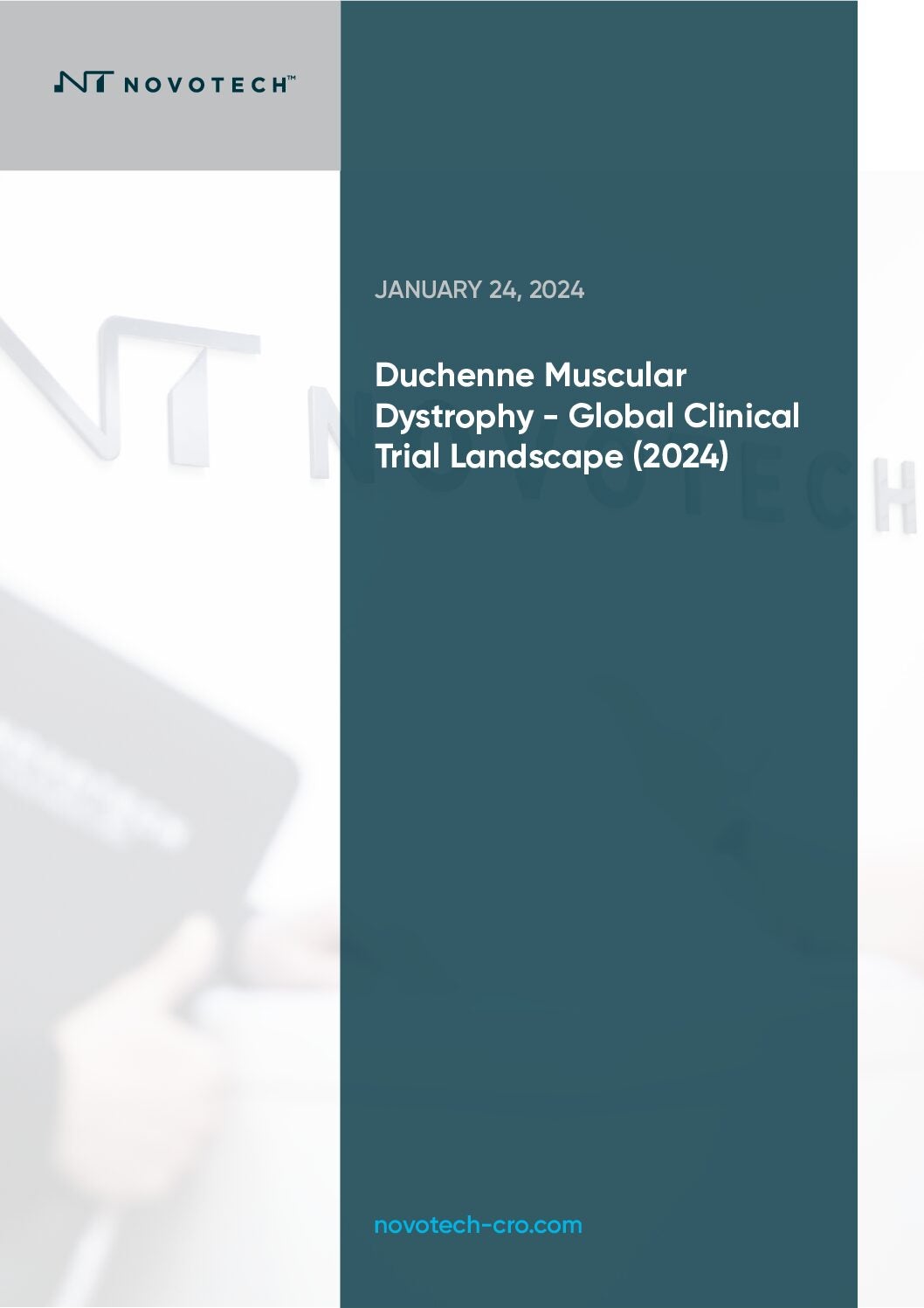
Impacting approximately 1 in 5,000 males globally, Duchenne Muscular Dystrophy is a rare genetic disorder characterised by progressive muscle weakness and skeletal degeneration. The prevalence of Duchenne Muscular Dystrophy is higher in certain regions, with Europe, particularly Sweden and Norway, along with the US, Canada, and China reporting elevated rates. This emphasises the considerable health burden associated with this condition, necessitating concerted efforts in research and treatment.
A new report from leading contract research organisation (CRO) Novotech dives deeper into the current clinical trials landscape and the status of experimental treatments for Duchenne Muscular Dystrophy. Treatment typically involves the administration of glucocorticoids, such as deflazacort, to manage symptoms and slow disease progression. These medications have demonstrated effectiveness in improving motor function, strength, and pulmonary function, while also reducing the risk of complications like scoliosis and cardiomyopathy.
Recent advancements in Duchenne Muscular Dystrophy treatment include genetic therapies, such as exon-skipping treatments like eteplirsen, golodirsen, and viltolarsen, as well as premature termination codon read-through therapy with ataluren. These innovative therapies target the underlying cause of Duchenne Muscular Dystrophy by addressing the deficiency of the dystrophin protein, which is central to the disease’s pathology, and could be the key to relief for thousands of patients around the world.
Global trials test new treatments
Novotech’s report finds that the global biotech and biopharmaceutical industry has initiated around 300 clinical trials for Duchenne Muscular Dystrophy since 2019. North America and Europe collectively conducted over 60% of Duchenne Muscular Dystrophy trials, with the UK and US leading in their respective regions. In contrast, the Asia-Pacific region, led by countries like Australia and Japan, contributed around 30% of trials. Europe demonstrated shorter recruitment durations and faster recruitment rates compared to Asia-Pacific and the US, highlighting regional variations in trial efficiency.
Ongoing research initiatives are exploring diverse strategies to comprehend and address the pathogenesis of Duchenne Muscular Dystrophy. Current investigations are actively examining approved gene and RNA therapies, encompassing approaches such as gene replacement, exon skipping, and the suppression of nonsense mutations.
Promising areas of focus include cell therapies utilising muscle precursor cells or stem cells, techniques geared towards membrane stabilisation, and interventions addressing secondary cascades. These secondary cascades include the development of anti-inflammatory and antifibrotic drugs. The dynamic landscape of gene therapies for Duchenne Muscular Dystrophy has witnessed several approved treatments in the past decade, and numerous investigational therapies contribute to ongoing research and development efforts.
Among the marketed drugs for Duchenne Muscular Dystrophy treatments, both Small Molecules and Antisense Oligonucleotides play prominent roles. Drugs like Casimersen, Viltolarsen, Deflazacort, and Delandistrogene Moxeparvovec are available globally, providing tangible options for individuals and families navigating the complexities of managing Duchenne Muscular Dystrophy.
This multifaceted approach to Duchenne Muscular Dystrophy, encompassing genetic therapies, clinical trials, and pharmacologic treatments, offers hope for improved outcomes and enhanced quality of life for those affected by this challenging disorder. Continued research and collaborative efforts worldwide underscore the commitment to addressing the complexities of Duchenne Muscular Dystrophy.
To learn more about the Duchenne Muscular Dystrophy clinical trials landscape in 2024, download the free report below.



